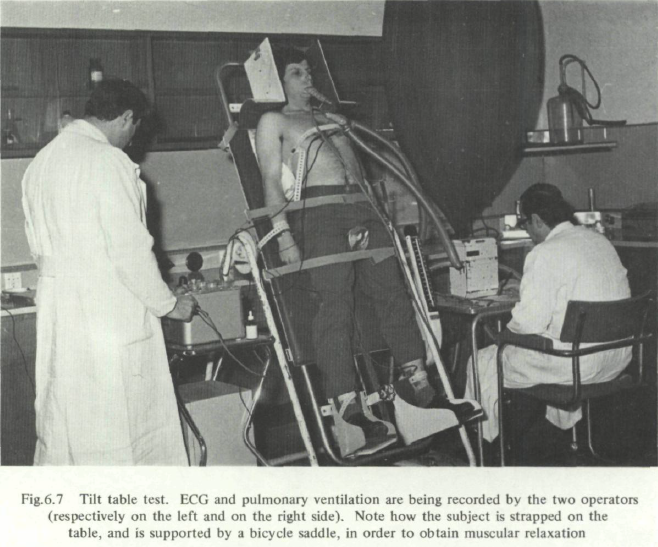From: Survey of Current Cardiovascular and Respiratory Examination Methods in Medical Selection and Control of Aircrew by A. Scano, NATO Agardograph No. 196, published December 1974, page 78.
“Tilt Table Test
“This test has been dropped owing to the physical discomfort it involved and the psychological resistance aroused in subjects owing to the fact that they have to be strapped to the table.
“It consists in keeping the subject for 5 minutes in a clinostatic position, for 5 minutes in an orthostatic position a+65 degrees and in an upside-down position a-65 degrees, again for 5 minutes.
“The test which, generally, reveal orthostatic vaso-depression, consisted in determining, and comparing, heart rate, pulmonary ventilation, respiratory rate and humeral blood pressure.
“The upside-down position was used exclusively for experimental purposes and was never taken into consideration in selection and control examinations.
“The data obtained, to which references have been made above, plus others, yielded in experimental tests on cardiac output (seen to be reduced in the orthostatic position and increased in the upside-down position, as compared to the clinostatic position) are not such as to allow this test to be considered valid and useful test, for the purposes of selection and control examinations of the physiological response of man to variations in G.
